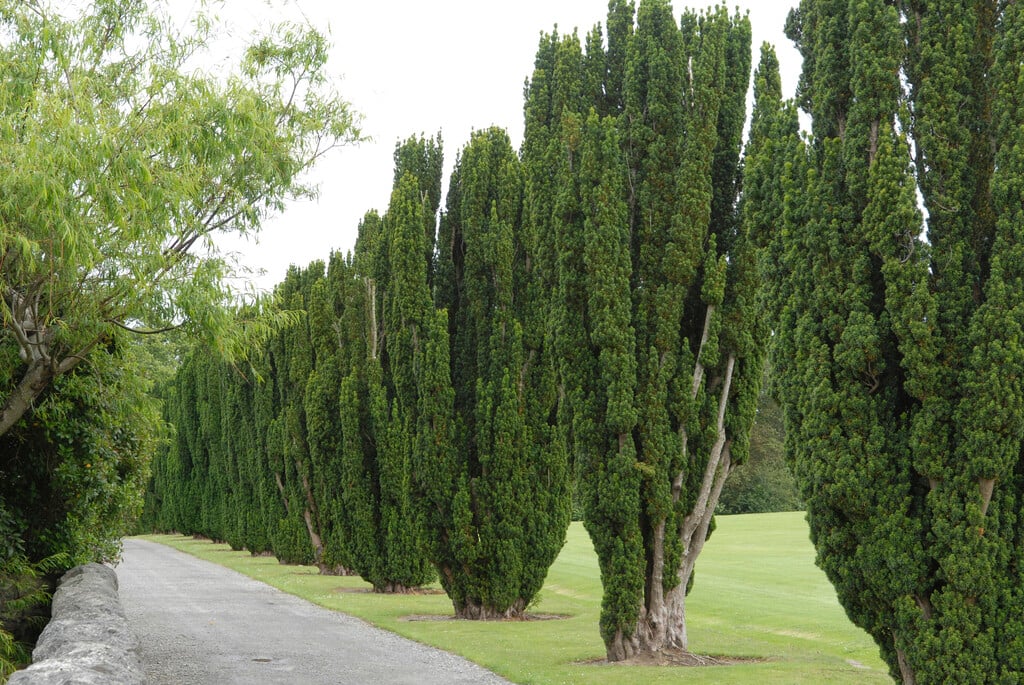Taxus baccata 'Fastigiata' (f)
Irish yew
A large, bushy, upright evergreen shrub, columnar when young, later broader, with erect shoots bearing radially arranged, dark green leaves
Synonyms
Taxus baccata 'Hibernica'Size
Ultimate height
8–12 metresTime to ultimate height
20–50 yearsUltimate spread
2.5–4 metresGrowing conditions
Moisture
Well–drainedpH
Acid, Alkaline, NeutralColour & scent
| Stem | Flower | Foliage | Fruit | |
| Spring | Yellow | Green | ||
|---|---|---|---|---|
| Summer | Green | |||
| Autumn | Green | Red | ||
| Winter | Green |
Position
- Full shade
- Full sun
- Partial shade
Aspect
West–facing or South–facing or North–facing or East–facing
Exposure
Exposed or Sheltered Hardiness
H7Botanical details
- Family
- Taxaceae
- Native to GB / Ireland
- No
- Foliage
- Evergreen
- Habit
- Columnar upright
- Potentially harmful
- Toxic if eaten. Wear gloves and other protective equipment when handling
- Genus
Taxus are small evergreen trees or large shrubs of rounded habit, with dense, linear leaves, insignificant flowers and, on female plants, conspicuous fleshy red arils surrounding the solitary seeds
- Name status
Accepted
How to grow
Cultivation
Grow in any well-drained soil. Tolerant of exposure and urban pollution
Propagation
Propagate by semi-hardwood cuttings or grafting
Suggested planting locations and garden types
- Architectural
- Low Maintenance
- Hedging and screens
Pruning
No regular pruning necessary, but can be trimmed and shaped when required
Pests
May be susceptible to tortrix moth, vine weevil, gall mites and scale insects
Diseases
May be susceptible to phytophthora root diseases and honey fungus (rarely)
Get involved
The Royal Horticultural Society is the UK’s leading gardening charity. We aim to enrich everyone’s life through plants, and make the UK a greener and more beautiful place.
